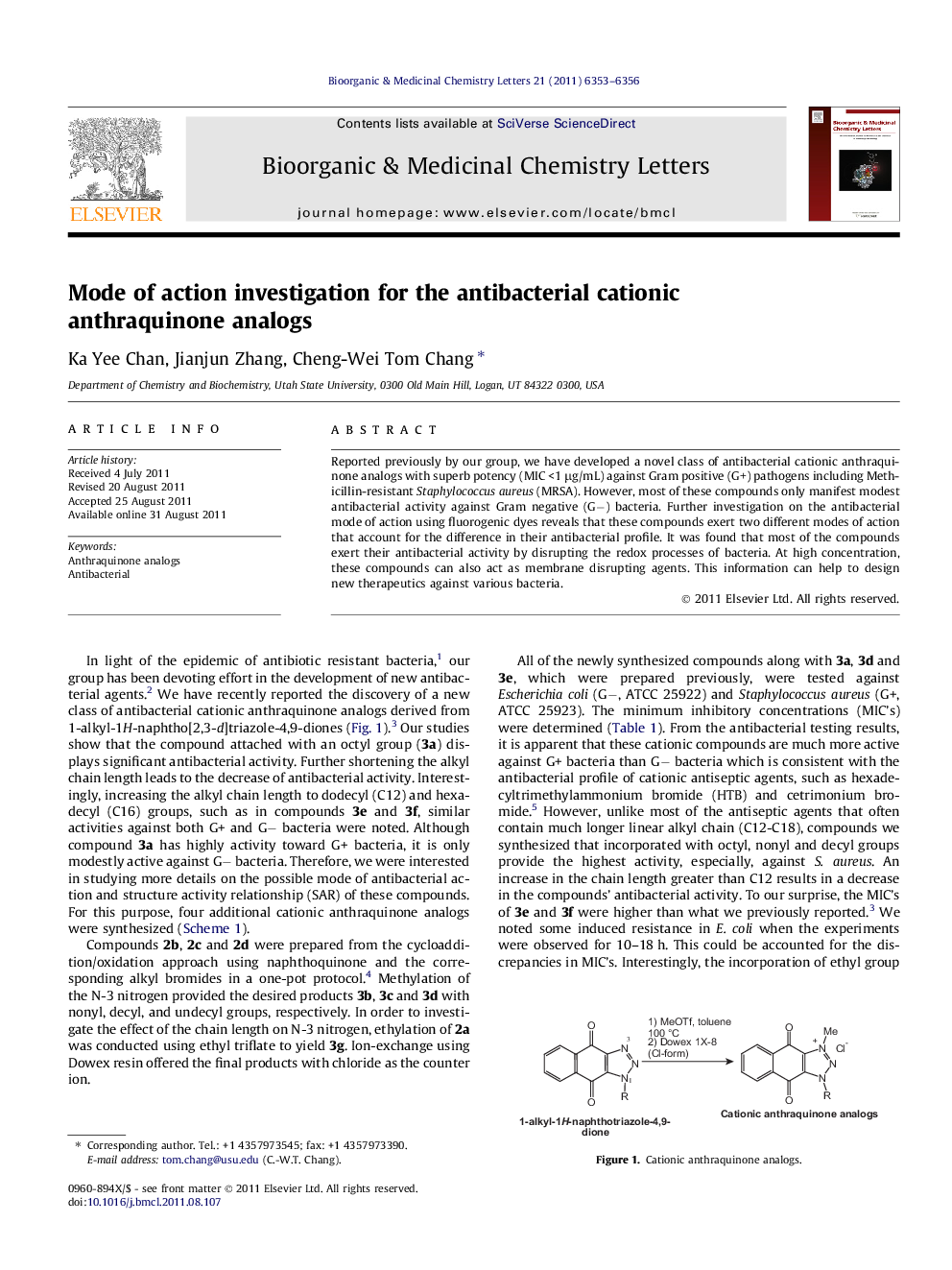| Article ID | Journal | Published Year | Pages | File Type |
|---|---|---|---|---|
| 1370417 | Bioorganic & Medicinal Chemistry Letters | 2011 | 4 Pages |
Reported previously by our group, we have developed a novel class of antibacterial cationic anthraquinone analogs with superb potency (MIC <1 μg/mL) against Gram positive (G+) pathogens including Methicillin-resistant Staphylococcus aureus (MRSA). However, most of these compounds only manifest modest antibacterial activity against Gram negative (G−) bacteria. Further investigation on the antibacterial mode of action using fluorogenic dyes reveals that these compounds exert two different modes of action that account for the difference in their antibacterial profile. It was found that most of the compounds exert their antibacterial activity by disrupting the redox processes of bacteria. At high concentration, these compounds can also act as membrane disrupting agents. This information can help to design new therapeutics against various bacteria.
Graphical abstractReported previously by our group, we have developed a novel class of antibacterial cationic anthraquinone analogs with superb potency (MIC <1 μg/mL) against Gram positive (G+) pathogens including Methicillin-resistant Staphylococcus aureus (MRSA). However, most of these compounds only manifest modest antibacterial activity against Gram negative (G−) bacteria. Further investigation on the antibacterial mode of action using fluorogenic dyes reveals that these compounds exert two different modes of action that account for the difference in their antibacterial profile. It was found that most of the compounds exert their antibacterial activity by disrupting the redox processes of bacteria. At high concentration, these compounds can also act as membrane disrupting agents. This information can help to design new therapeutics against various bacteria.Figure optionsDownload full-size imageDownload as PowerPoint slide
